
 Start by finding a 5 gallon bucket. Make sure it is clean and food grade, meaning there’s never been any nasty chemicals stored or shipped in your container. Usually you can acquire these by visiting your local bakery or even a trip to the hardware store will lead you to a simple 5-gallon bucket. Generally they can be purchased at your big-box hardware stores for around $2.50.
Start by finding a 5 gallon bucket. Make sure it is clean and food grade, meaning there’s never been any nasty chemicals stored or shipped in your container. Usually you can acquire these by visiting your local bakery or even a trip to the hardware store will lead you to a simple 5-gallon bucket. Generally they can be purchased at your big-box hardware stores for around $2.50.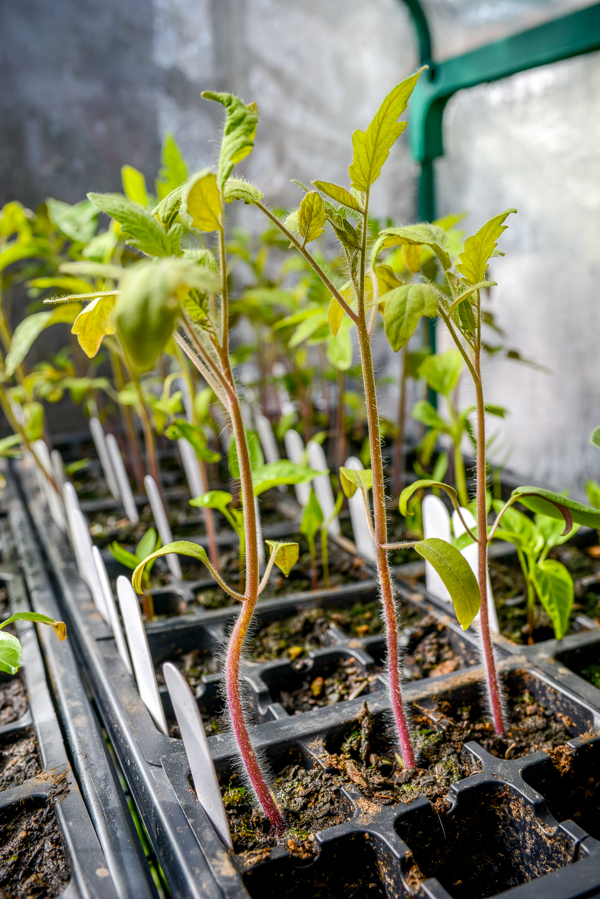 For best results, especially in climates that are a little cooler, try starting your tomato and pepper plants indoors 6-8 weeks before your last average frost date. Tomatoes and peppers do well with transplanting and rarely experience “shock” once they are moved from their indoor locations out into their permanent home in the garden.
For best results, especially in climates that are a little cooler, try starting your tomato and pepper plants indoors 6-8 weeks before your last average frost date. Tomatoes and peppers do well with transplanting and rarely experience “shock” once they are moved from their indoor locations out into their permanent home in the garden.
Add your nutrient dense soil into your 5 gallon bucket. Dig a hole deep enough for you to plant your seedlings and then add a small amount of vegetable or tomato plant food at the bottom of each hole. Give the soil a light water with a watering can.
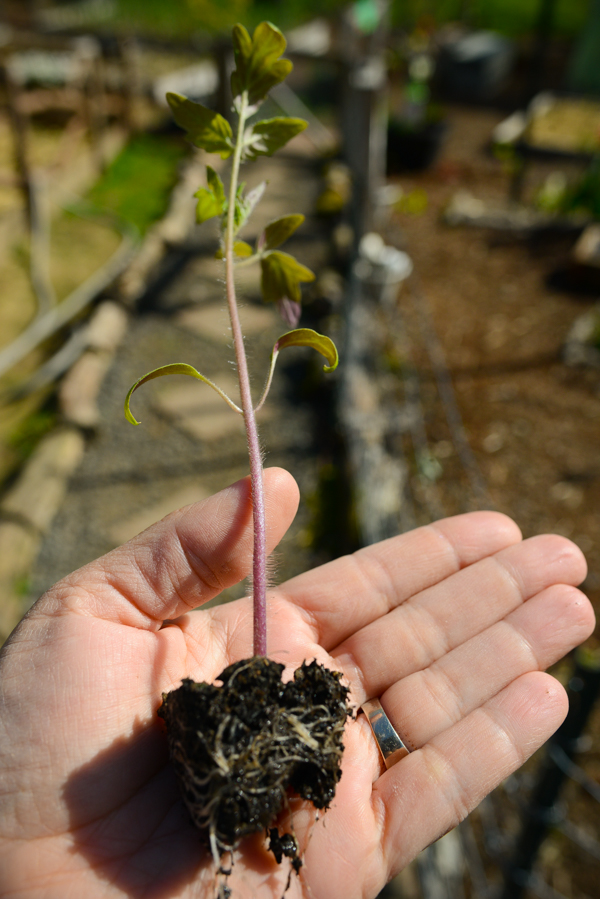 Place your tomato plant inside the hole and then fill the surrounding area with soil. Remember that you can bury your tomato plants extra deep, up to their first set of true leaves. This long “stem” that you’re burying into the soil will actually help the tomato plant develop a strong root system. So bury those tomatoes deep! They love it.
Place your tomato plant inside the hole and then fill the surrounding area with soil. Remember that you can bury your tomato plants extra deep, up to their first set of true leaves. This long “stem” that you’re burying into the soil will actually help the tomato plant develop a strong root system. So bury those tomatoes deep! They love it.
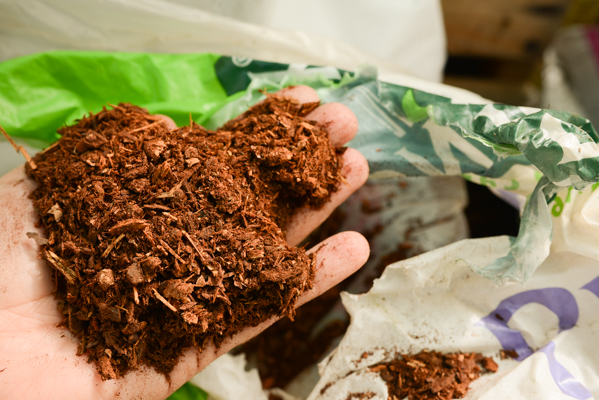 To help keep weeds down in your container, spread a thin layer of mulch on top of the soil. This will also help keep the soil moist and from drying out too quickly. Because you’re growing in containers, the soil will dry out sooner than if it had been planted directly into the ground, so keep an eye on it. Peppers don’t mind soil that is slightly dryer, once the plant is established but your tomatoes will need regular watering. Too much, or too little watering will result in cracked tomatoes, or blossom end rot, once they have reached maturity.
To help keep weeds down in your container, spread a thin layer of mulch on top of the soil. This will also help keep the soil moist and from drying out too quickly. Because you’re growing in containers, the soil will dry out sooner than if it had been planted directly into the ground, so keep an eye on it. Peppers don’t mind soil that is slightly dryer, once the plant is established but your tomatoes will need regular watering. Too much, or too little watering will result in cracked tomatoes, or blossom end rot, once they have reached maturity.

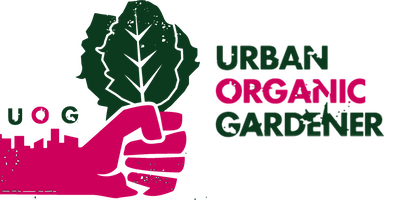














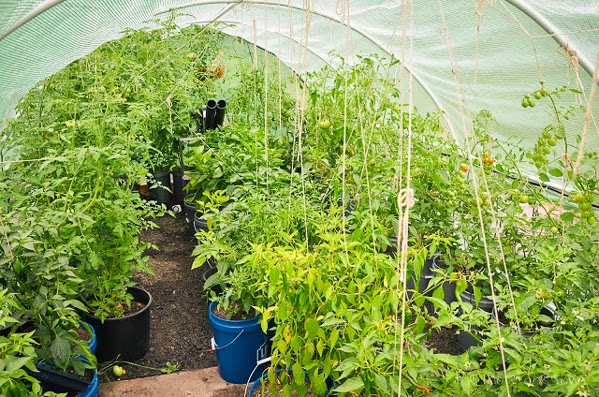
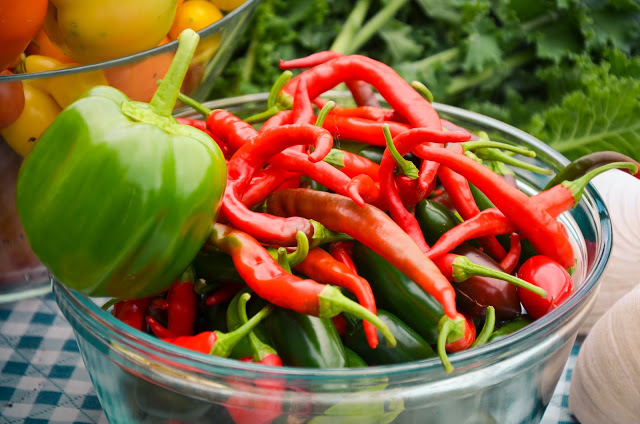
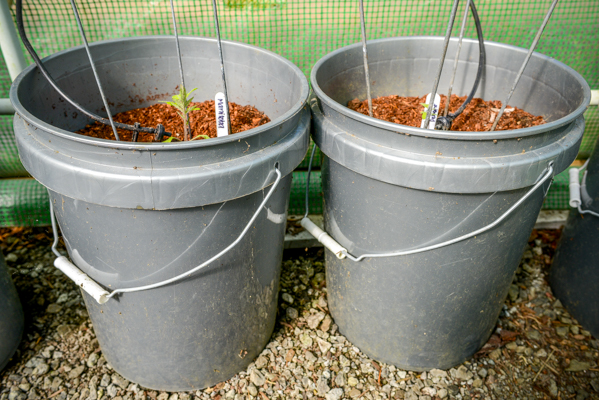
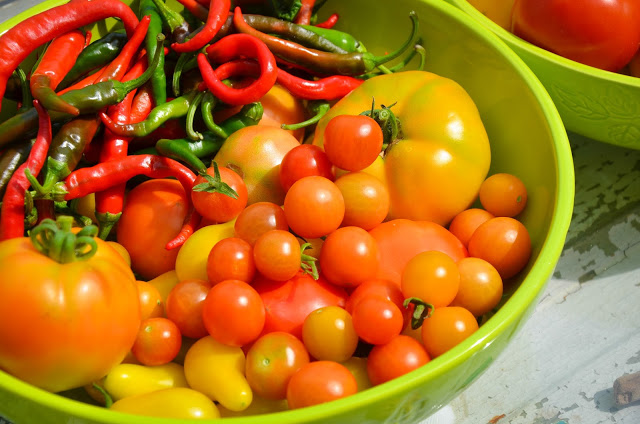
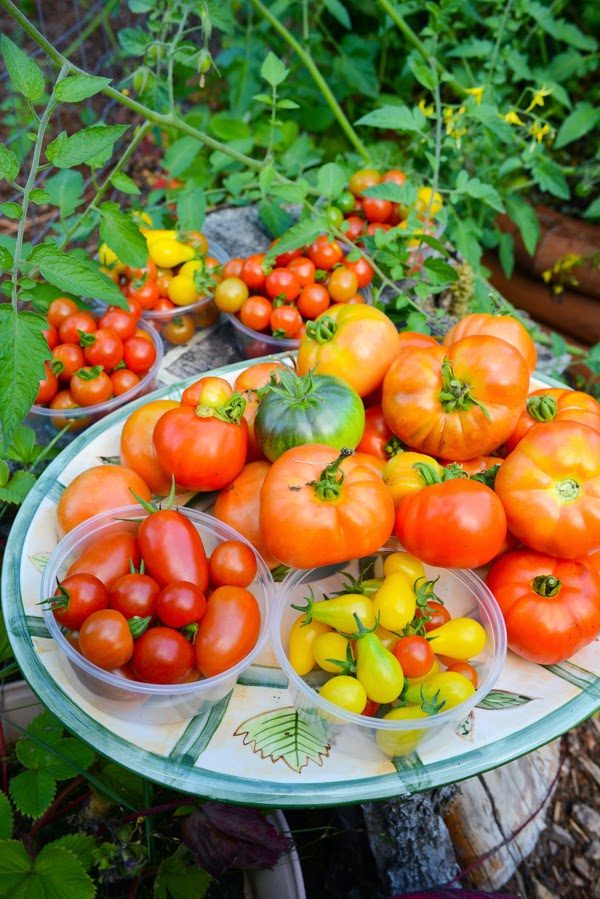
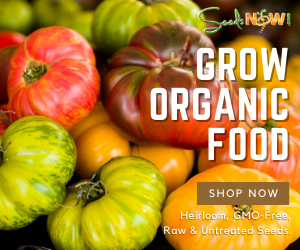




Great
post – and lovely pictures! I grew tomatoes in containers for several years
when I lived in an apartment without any garden space. Quick tip: Be
sure to drill some drainage holes in the bottom of your bucket before
adding soil so your plants don’t drown!
Do you need to punch holes in bottom of bucket for exess water ?
I only found 3.5 gallon buckets at my bakery. Will that be to small for the root structure?
I wonder whether these buckets do not contain some sort of bad chemicals that the plants could absorb and pass on to us. Anybody know ?
I used 3.5 gallon buckets last year with no problem.
Yes, you need to put holes in the bottom of your buckets for drainage; a drill works really well for this if you have one.
I faced a lot of problems planting tomatoes..
This reminds me of my granny’s place. She used to plant all kind of vegetables.
Anyone use Mr. Earth Fertilizer? Recommended?
That’s why you would want to get food grade buckets from restaurants, delis, bakeries, etc. You definitely would not want to get buckets that, for example, had held pool tabs or shock, or paint, things like that.
Straight out of the garden – fresh and yummy. I envy you. My garden is small and can’t produce much veggies. Cool pictures, by the way.
if I was your dad I would have named you ‘Judas”.
thats her dads name
This might be a stupid questions but is it safe to use a bucket that has been used to store liquid tide “laundry detergent” for growing veggies? I ask because I can get them for free at a local hotel and it would save me so much time and money to just do that but I want to make sure its safe too.
A former housekeeping/laundry manager here: rinse, rinse, rinse. If you are still seeing suds you still have residue. Industrial detergents are extremely concentrated and very, very base. Think pure lye. It will literally eat right through your shoes. Something acidic like vinegar might be worth a try. Although, I question the hotel giving them to you as they are hazardous chemical containers. Walmart sells 5 gal buckets for less than $5.
what kind of dirt mix should we use in a 5 gallon bucket . and what size holes do i need to drill in the bottom of each bucket
Do the buckets need drain holes
if there is a Firehouse Subs near you, they sell their 5 gal pickle containers for $2. So they are food grade